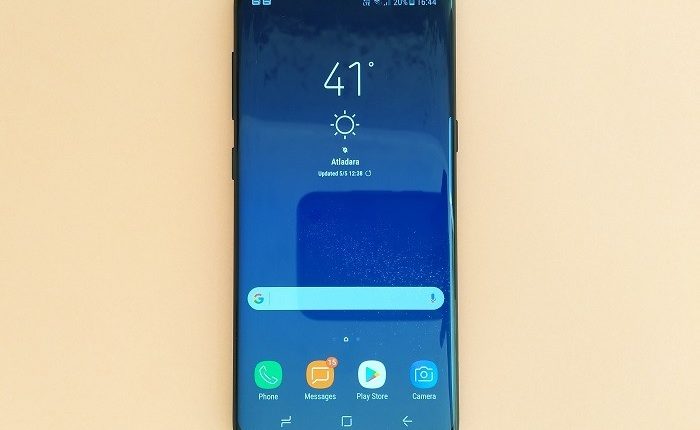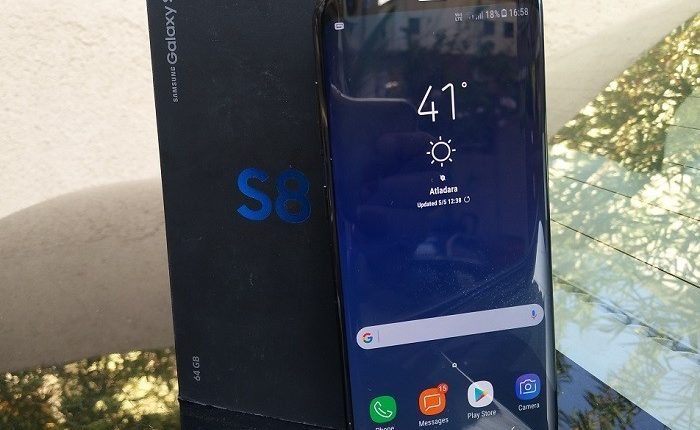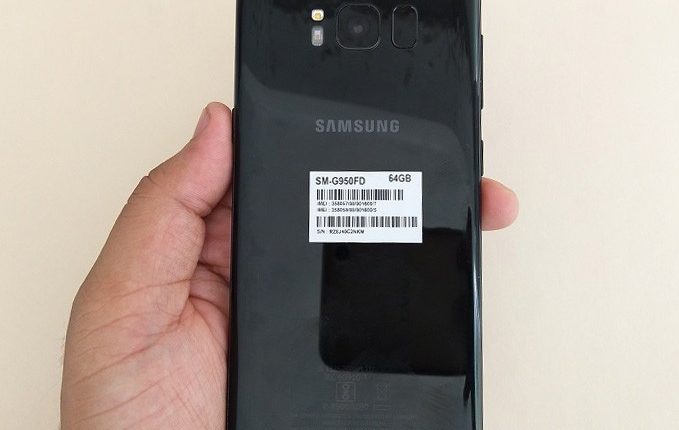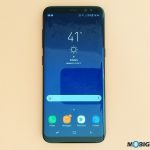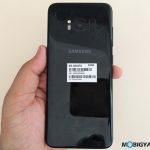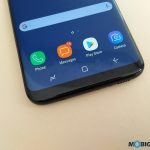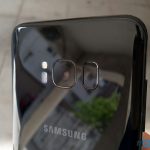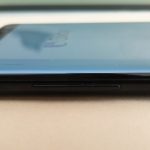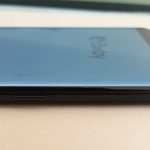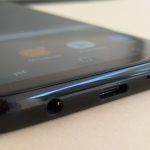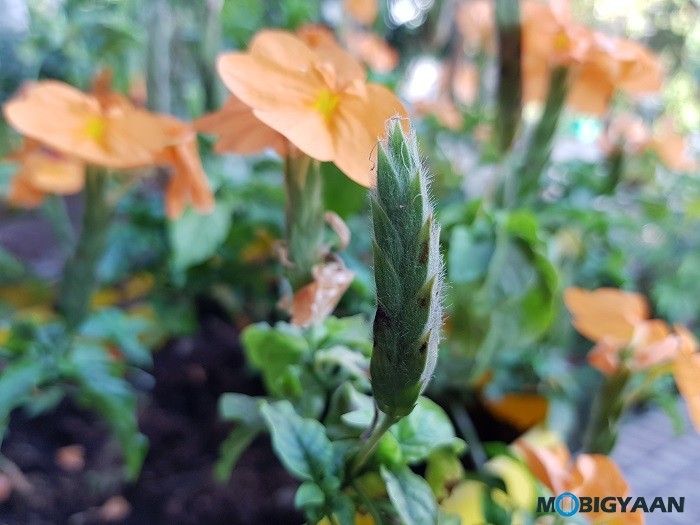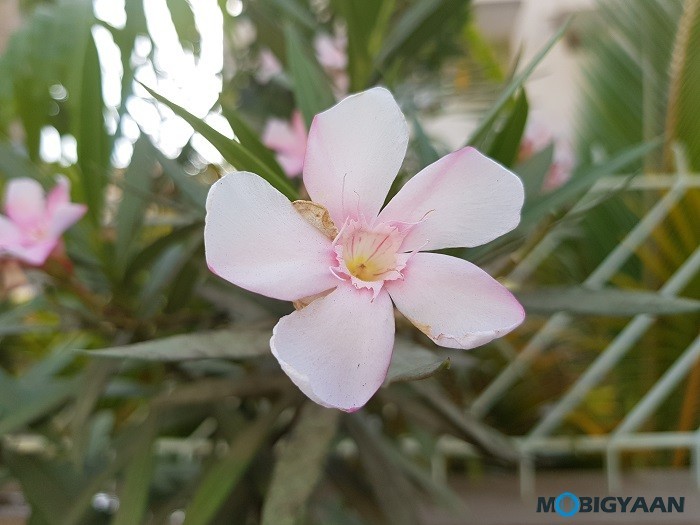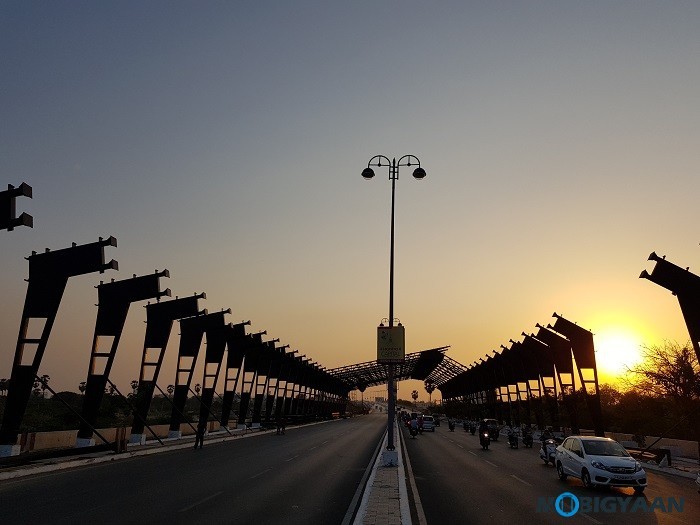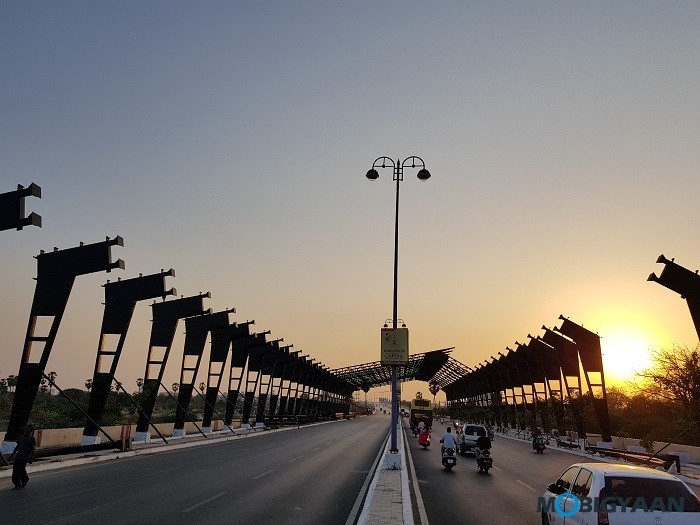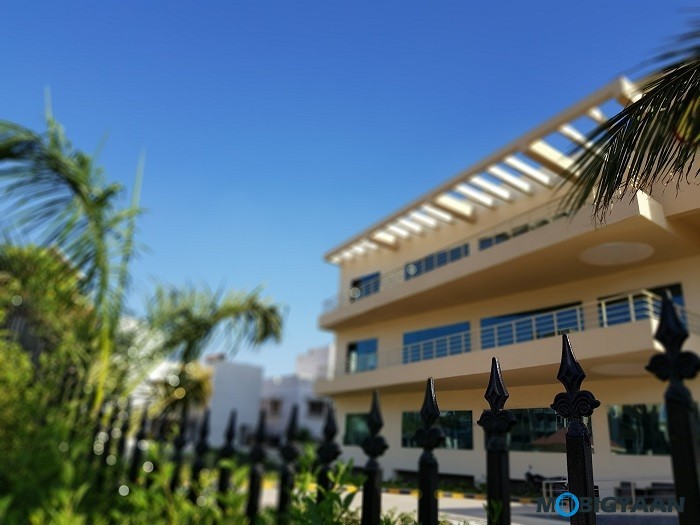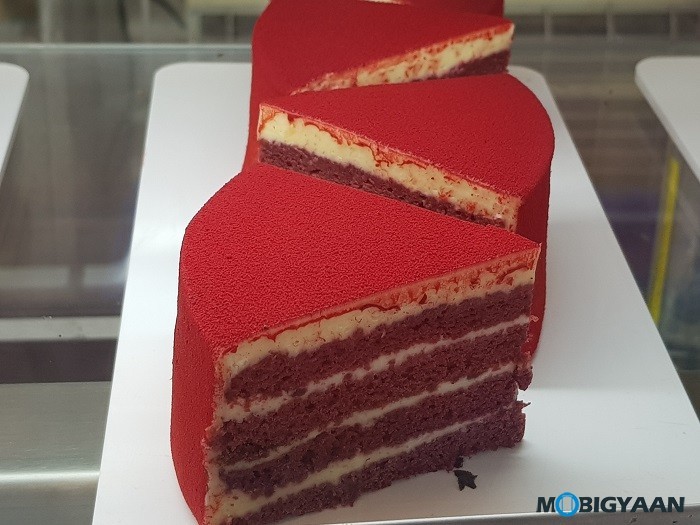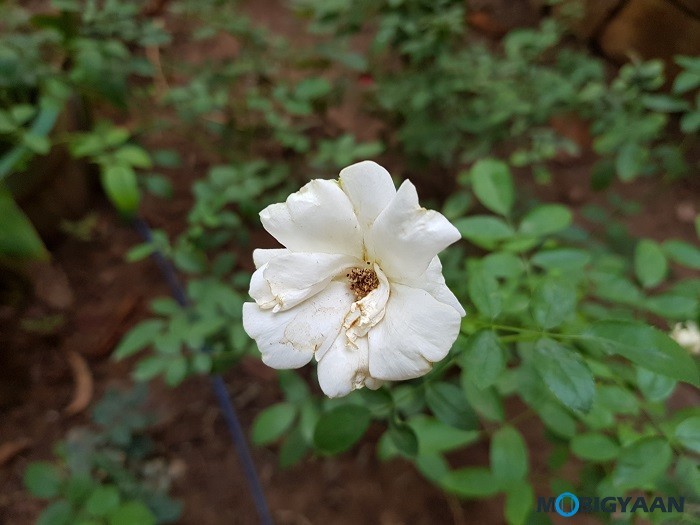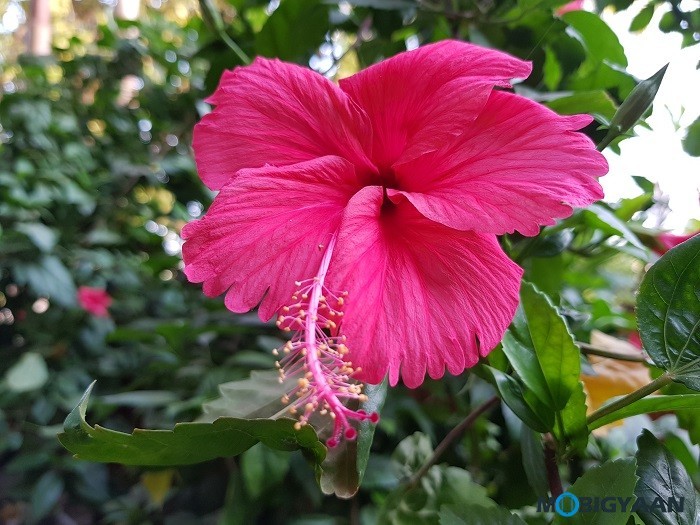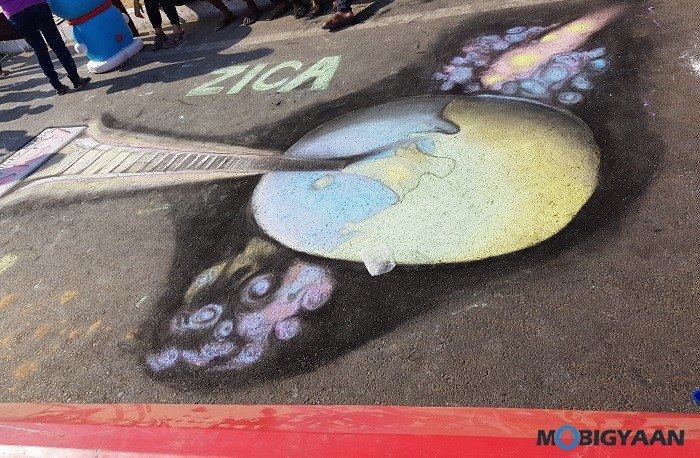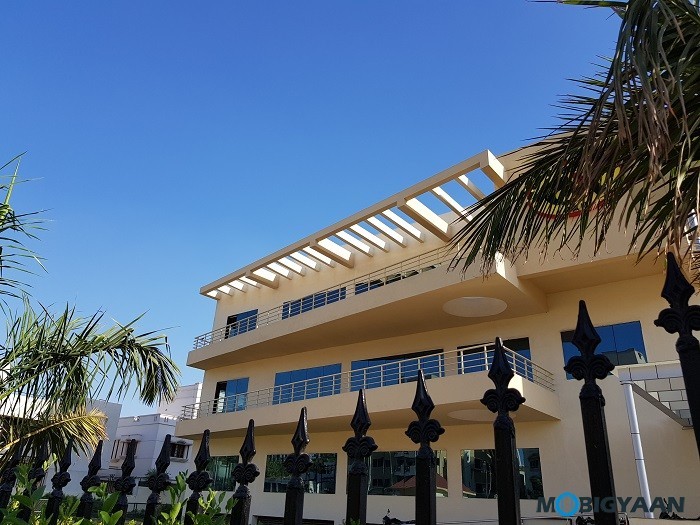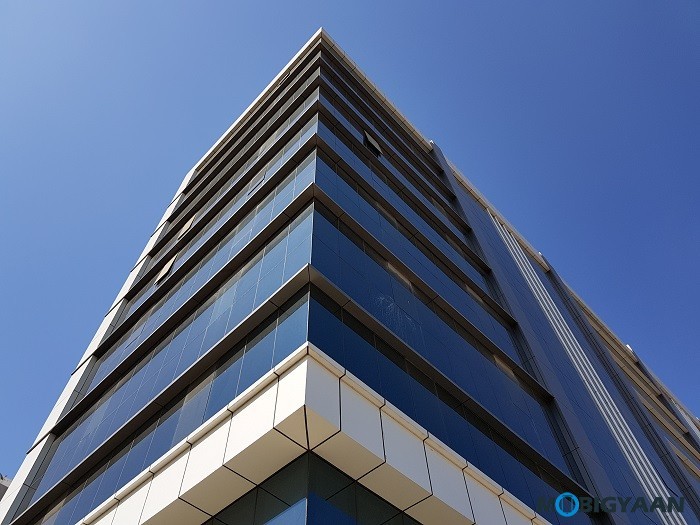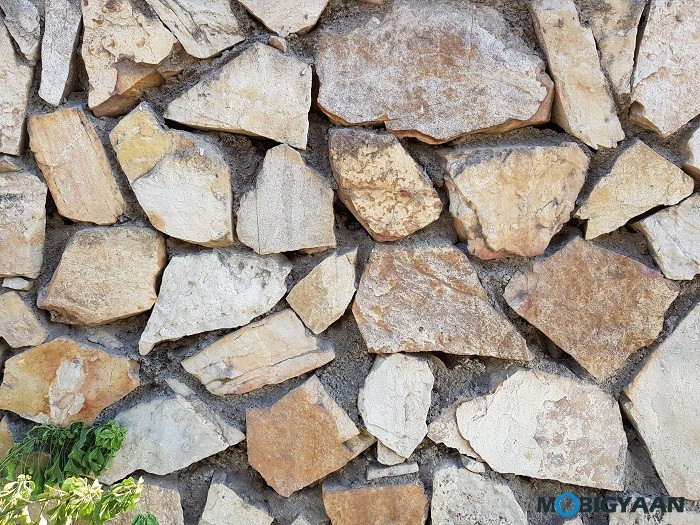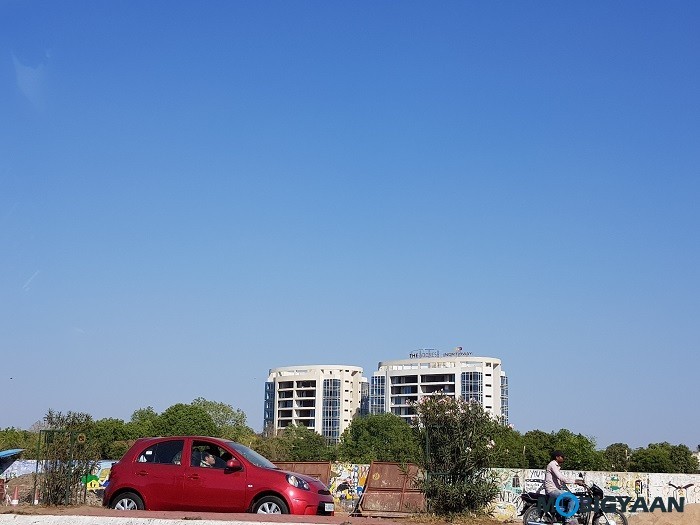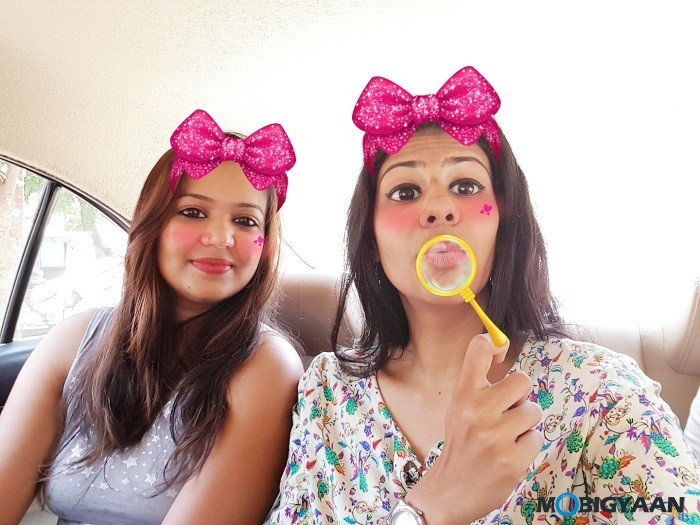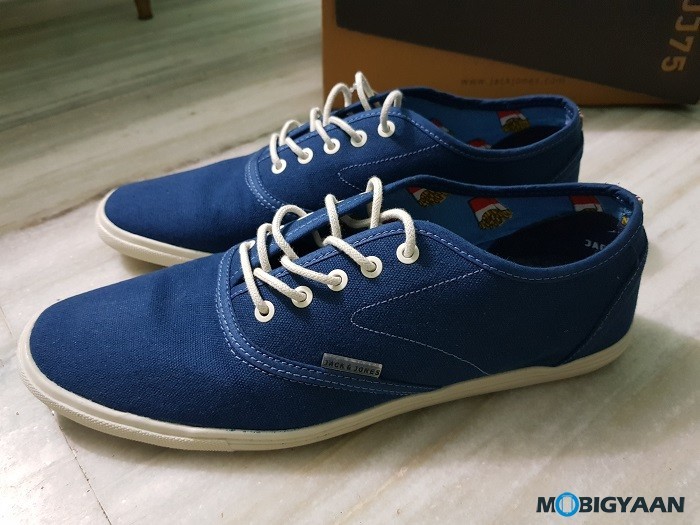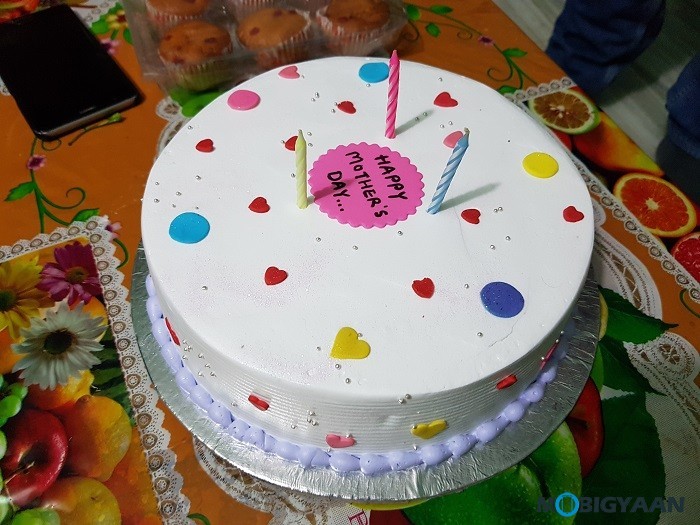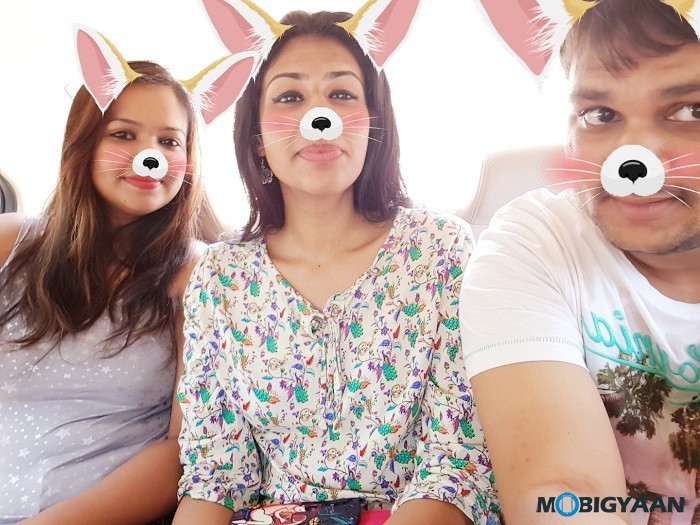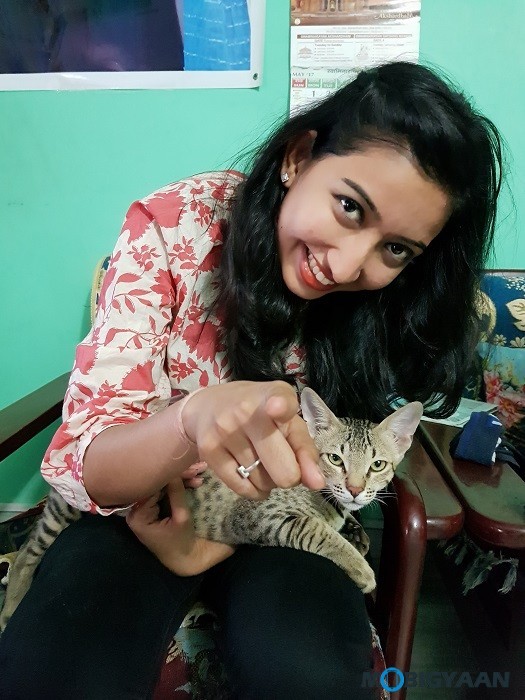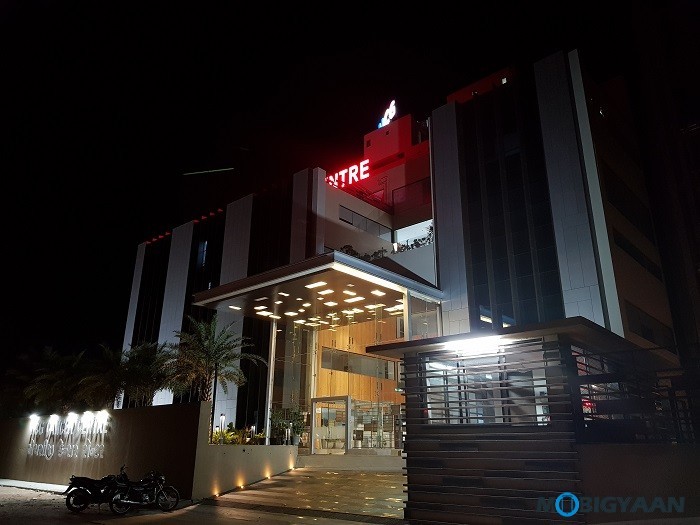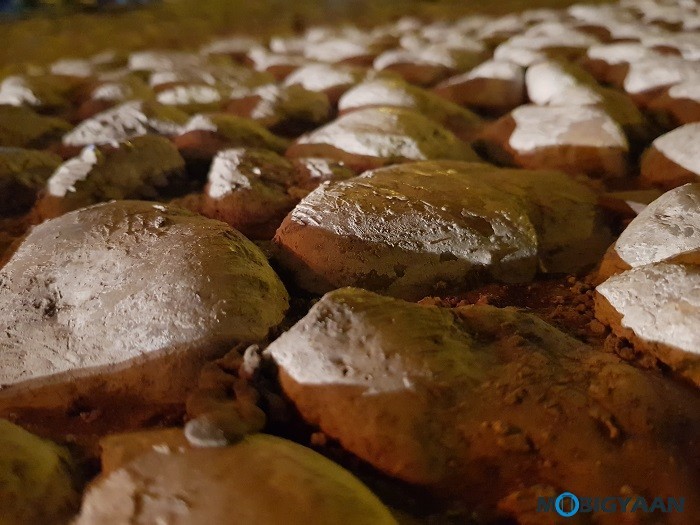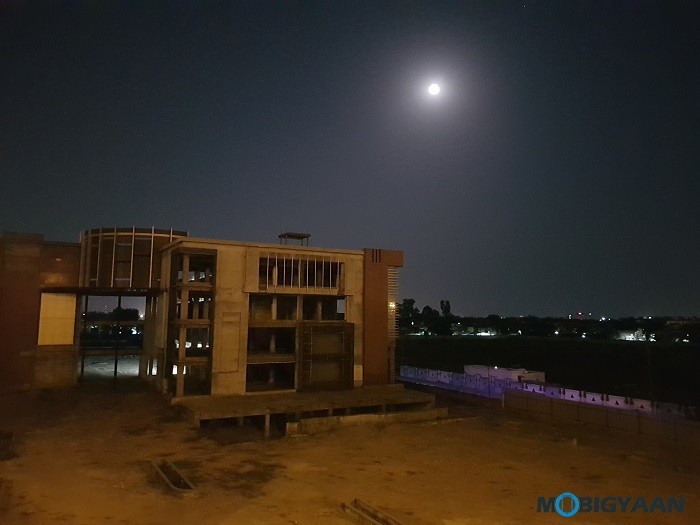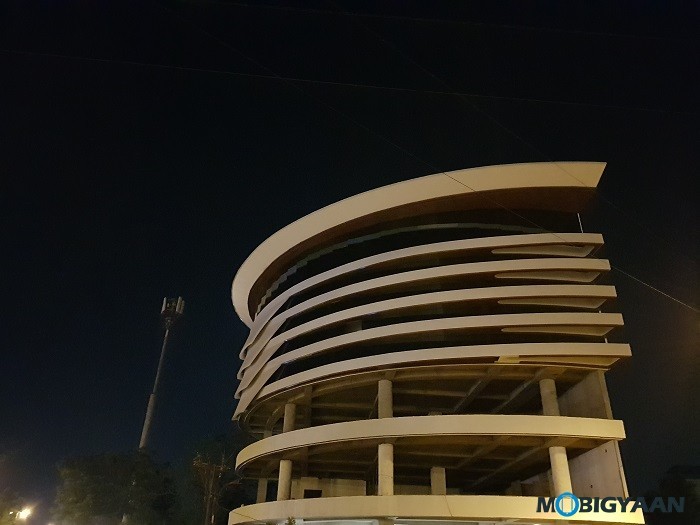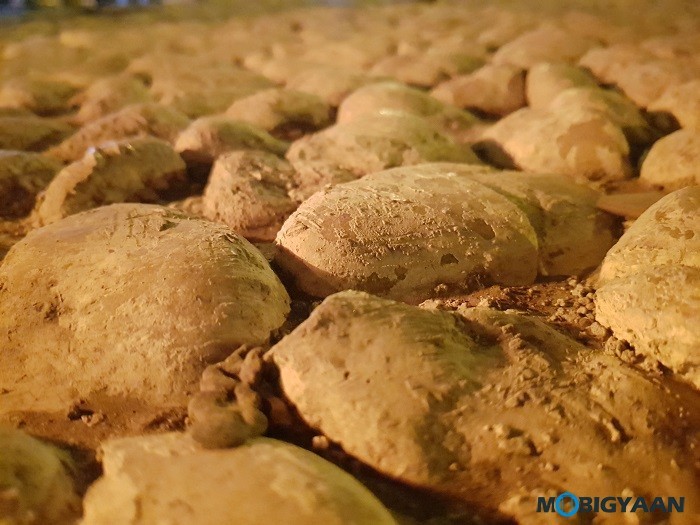Samsung’s flagship offering just got launched recently, the Samsung Galaxy S8 is instantly noticeable by its gorgeous infinity display. It is the successor to the last year’s model Galaxy S7 and now the S8 is completely changed by its looks. We gave our initial impressions of the phone, so let’s take a look at the full review of the Samsung Galaxy S8.
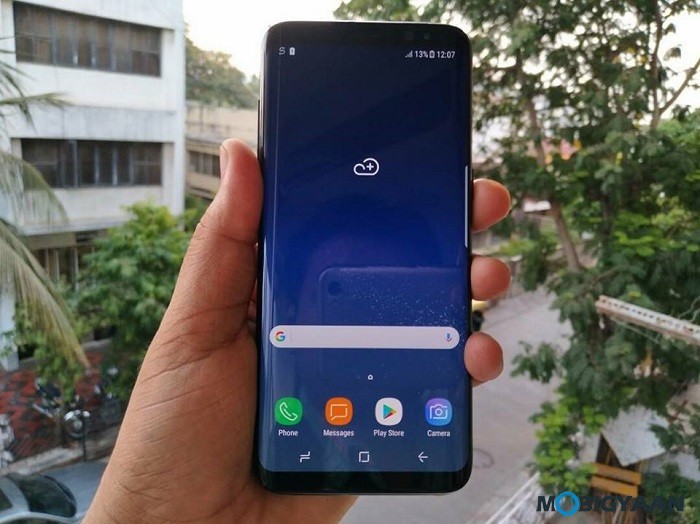
What’s In The Box
- Samsung Galaxy S8 with built-in battery
- USB Type-C Cable
- Adapter (9V, 1.67A | 5V, 2A)
- AKG Earphones worth ₹6,500
- USB Type-C OTG Connector
- Micro USB to Type-C Converter
- SIM Tray Ejector
- User Manual and Warranty Card
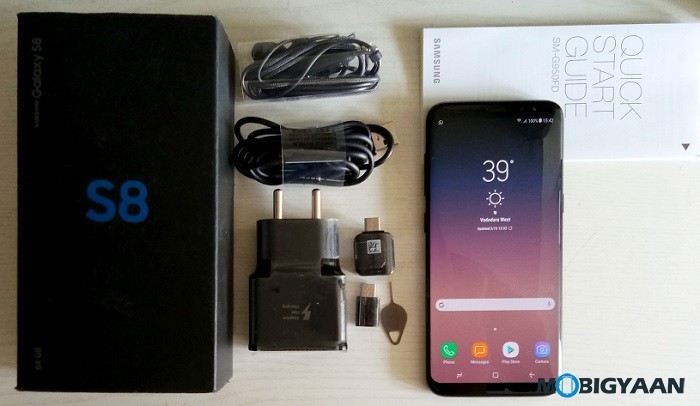
Samsung Galaxy S8 Specifications
- Display: 5.8-inch Quad HD+ Super AMOLED Infinity Display (2960 x 1440 pixels resolution | 570 ppi), Always On Display, Corning Gorilla Glass 5 on top
- Fingerprint Scanner: Yes, at the back (next to the rear camera)
- Iris Scanner: Yes
- Protection: IP68 Ratings (dust and water resistant), Corning Gorilla Glass 5
- Software: Android 7.0 Nougat, TouchWiz UI, Bixby Assistant
- CPU: Up to 2.35 GHz octa-core processor (4 x Samsung M2 cores & 4 x Cortex-A53 cores), 10 nm Samsung Exynos 8895 SoC
- GPU: Mali-G71 MP20 (546 MHz)
- Memory: 4 GB LPDDR4X RAM
- Storage: 64 GB UFS 2.1 internal storage, MicroSD up to 256 GB
- Main Camera: 12 MP f/1.7 aperture, Dual Pixel, OIS, LED flash
- Front Camera: 8 MP, f/1.7 aperture
- Connectivity: USB 3.1 (type-c), Wi-Fi 802.11 a/b/g/n/ac (2.4/5 GHz), VHT80 MU-MIMO, Bluetooth 5.0, NFC, GPS
- Sensors: Accelerometer, Barometer, Fingerprint Sensor, Gyro Sensor, Geomagnetic Sensor, Hall Sensor, Heart Rate Sensor, Proximity Sensor, RGB Light Sensor, Iris Sensor, Pressure Sensor
- Cellular: 4G LTE network, dual nano SIM (GSM Bands), SIM2 as MicroSD, VoLTE-enabled, Cat.16 5CA 1 Gbps (download) and Cat.13 2CA 150 MBps (upload) LTE modem
- Battery: 3,000 mAh Li-Ion (non-removable)
- Charging: Fast Charging on wired and wireless, Wireless Charging compatible with WPC and PMA
- Dimensions: 148.9 mm x 68.1 mm x 8 mm
- Weight: 155 grams
- Box: Handset, Adaptor, AKG Earphones (₹6,500), User Manual, Type-C OTG, Micro USB to Type-C Converter
- Colors: Midnight Black, Maple Gold
- Price: ₹57,900
Design, Build & Ergonomics
The moment I took out the phone out of the box, I was completely impressed by its bezel-less design and gorgeous infinity display. Samsung continues using the glass body along with the rounded and tapered design on the back. Both sides flaunts Corning Gorilla Glass 5 with a 2.5D curved glass design.
Despite having a 5.8-inch screen, it still feels compact, easier to hold and get a grip. It is long, owns a slim profile and curves all around the edges. I noticed the Galaxy S8 has rounded corners inside the display. Usually, every other phone has a screen with four 90-degree corners, but S8 offers curved corners, haven’t you noticed?
The overall design is very neat and bold, highly attractive and premium but too sleek. If you have wet hands or your phone gets water spilled, you may be having some trouble holding it since it can be easily dropped from sweaty hands.
Besides all these, the phone is dust proof and water resistant. It is IP68 certified giving an advantage over the flagships that lack this ability. As far as I know its competitors, Sony Xperia XZs and LG G6 are the only two flagships that can survive dust and water.
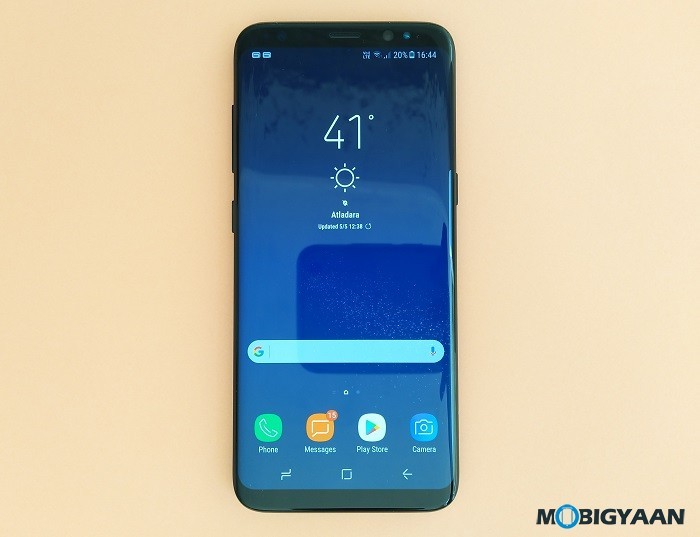
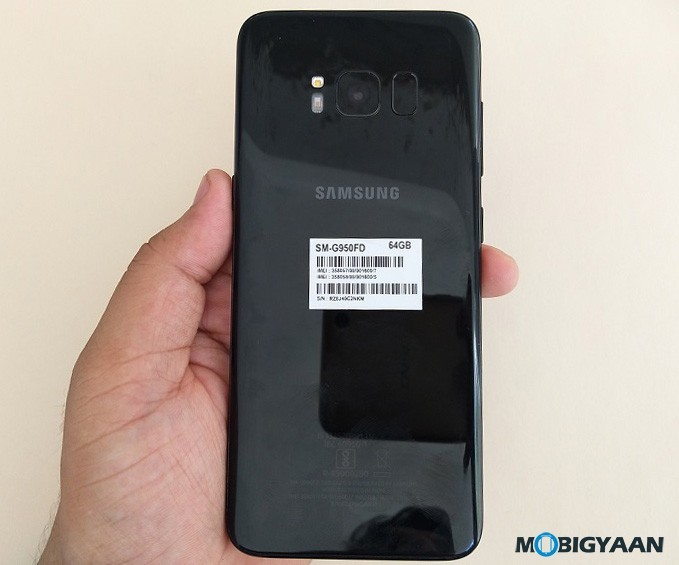
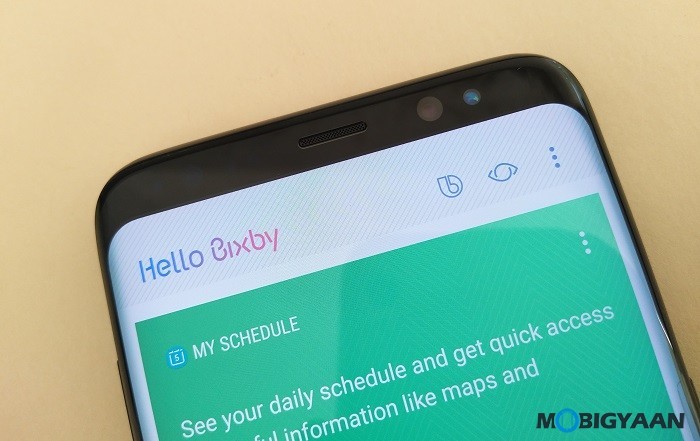
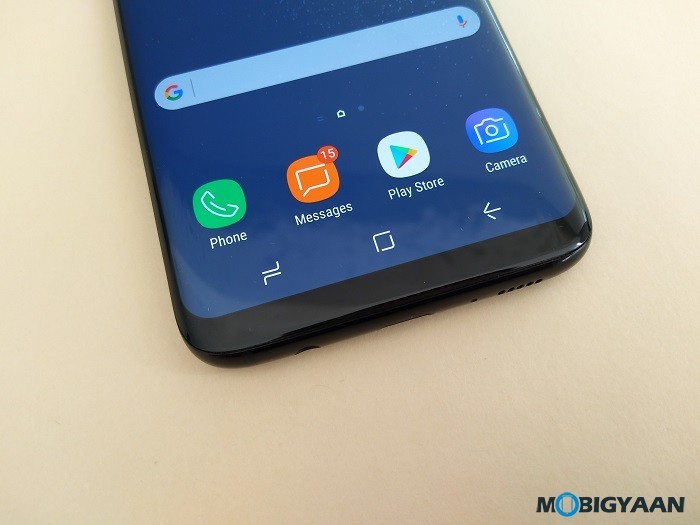
As for the camera, the Samsung Galaxy S8 is equipped with a 12 MP f/1.7 camera using the Sony IMX333 Exmor RS sensor on the rear side aided by optical image stabilizer. The camera records 4K video recording and 240 fps slow motion videos. On the front, there is a 8 MP f/1.7 wide angle camera for taking selfies.
And lastly, there’s one thing obvious, the oval shaped home key is gone for good. It uses onscreen navigation keys to extend the screen narrowing down the bezels. The fingerprint scanner is relocated at the back alongside the camera. The positioning of the scanner is unusual and most of the times my finger goes on the camera instead of the scanner. Moreover, it flaunts an Iris scanner too that will help you unlock the phone just by glancing at it.
There’s a hybrid SIM tray which supports 4G SIM cards and VoLTE calls. The phone can be used as a dual SIM (nano-SIMs with GSM bands) or a MicroSD on SIM2. On the bottom, there is a USB version 3.1 with type-C port, a 3.5 mm earphones jack, and loudspeakers. Both microphones are located on the top and the bottom. There’s an added Bixby key that calls for Bixby when pressed.
Samsung has ditched the IR Blaster starting from the last year models, so, the S8 eventually missing it out. It also has the newer Bluetooth 5.0 LE that transfers files up to 2 Mbps.
Samsung, this time, offered AKG-branded earplugs worth ₹6,500. They do sound well, and they are pretty good for the music, however, I have seen better earphones, I am talking about the Apple earpods and the LeEco’s CDLA earphones. Nevertheless, I am satisfied with the high-quality earphones Samsung has provided.
Samsung Galaxy S8 Review – iPhone Killer is Here
PREV 1 of 12 NEXTDisplay
The 5.8-inch Infinity display on the S8 uses a Super AMOLED QHD+ screen and while the resolution on both the displays (S8+) are same, only the screen size differs. Quad HD+ has an odd resolution of 2960 x 1440 pixels and hence, 568 ppi pixel density is achieved, its pixel density is higher than most phones comparatively.
In addition, the display has rounded corners, outside as well as from the inside, take a look at it closely. Usually, every other phone has a screen with four 90-degree corners, though S8 comes with curved corners. Furthermore, the display is protected by a scratch-resistant Corning Gorilla Glass 5 on top, as well as the S8 is dust proof and water resistant i.e. IP68 certified giving an advantage over the flagships that lack this ability.

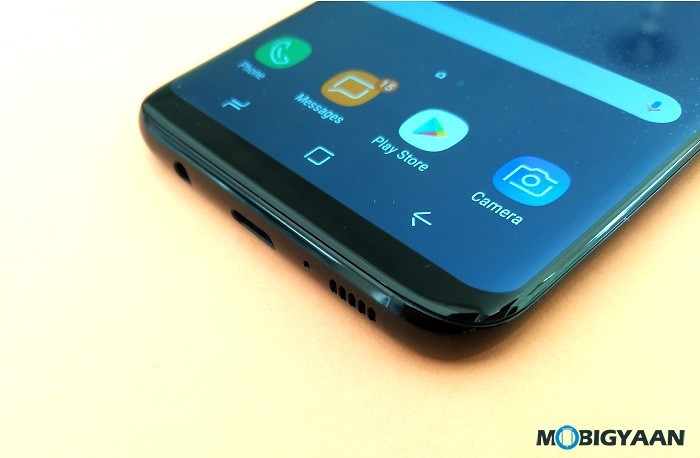
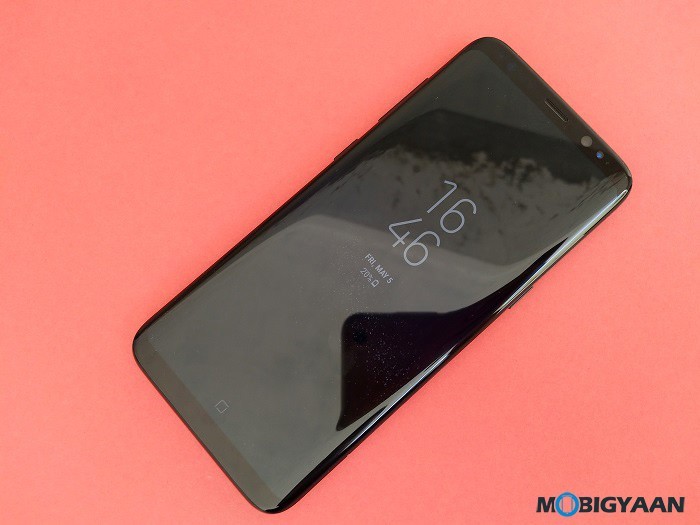
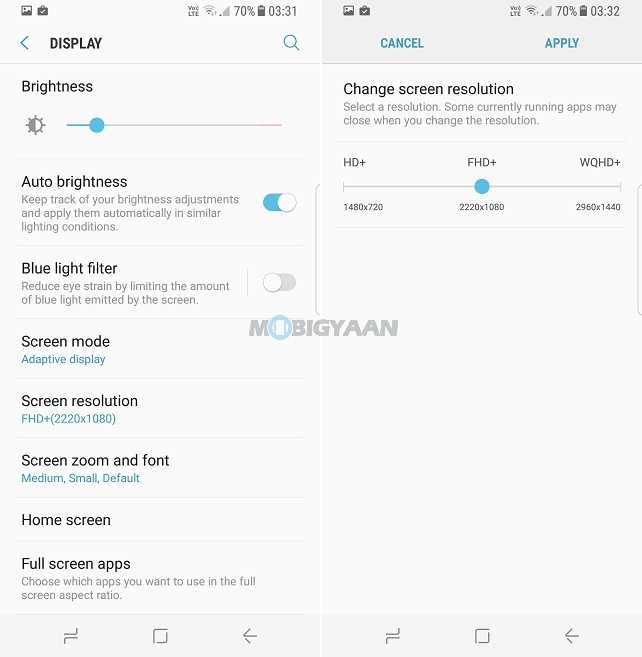
Software & User Interface
The software is updated, Samsung Galaxy S8 uses the new Google Android 7.0 Nougat. With a few updates in the software, a majority of the bloatware is removed, the app drawer icon is also removed, but can be accessed with a single swipe on the homescreen. Nevertheless, the interface can bring back the app drawer icon. Anyways, the software experience is a little different from the regular Samsung UI, it is now polished, the navigation buttons doesn’t resemble the default stock Android, and the home button has gestures built into it, such as opening the camera.
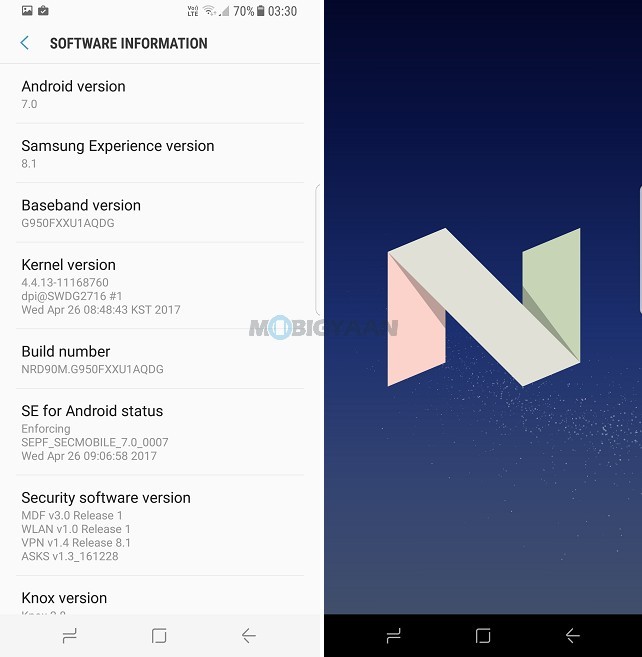
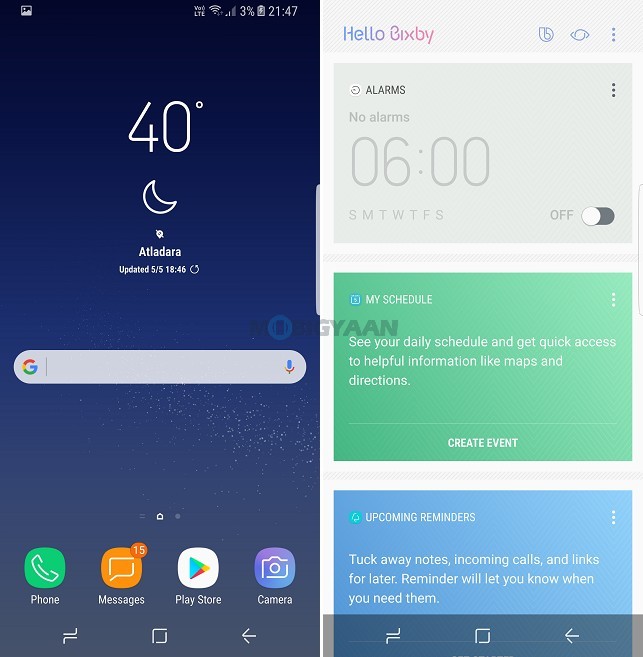
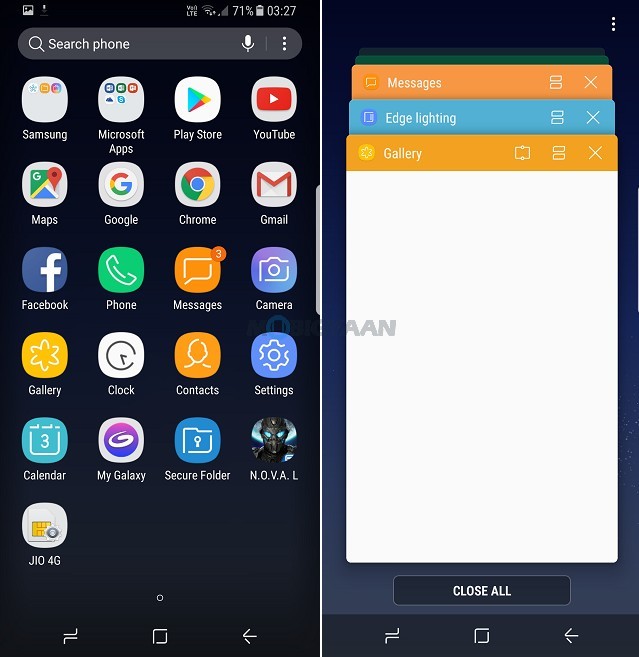
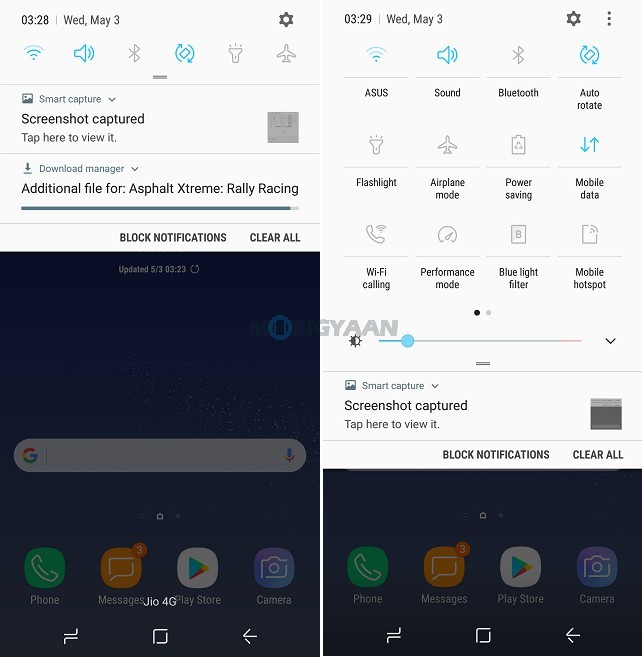
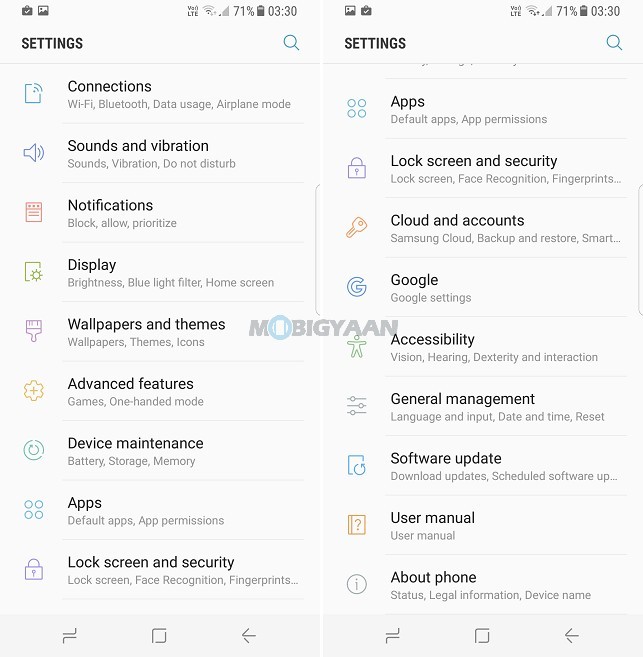
Samsung has added a virtual assistant known to be Bixby. Samsung’s Bixby is the Google Assistant and Apple Siri counterpart but since it is not mature enough, it’is not easy to tackle them. This contextual AI does the job, you can call a person or just open the camera by voice commands. If you are familiar with the Siri and Google Assistant, the Bixby works similarly.
Press the Bixby key on the left side of your phone or swipe the right on the Home screen to view recommended content that Bixby has prepared fro you. You can close the Bixby by pressing the key again.
In an event alongside the S8, Samsung has introduced DeX, a device that converts S8 into a full-fledged desktop computer giving you a comprehensive desktop like experience. We didn’t receive the DeX unit but I strongly believe it could compete the Microsoft Display Dock counterpart.
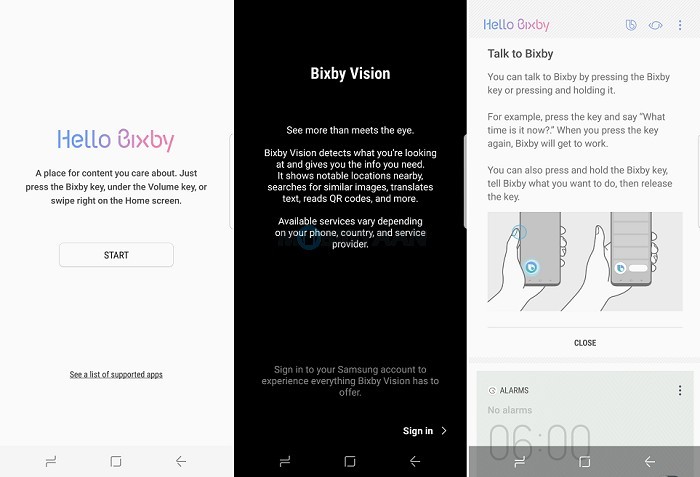
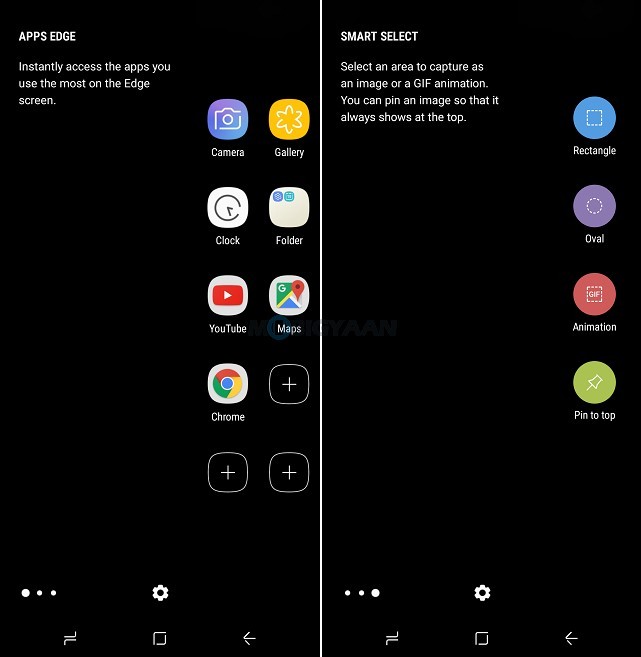
Fingerprint and Iris Scanner
The fingerprint sensor has migrated to the back and even supports a swipe to uncover the notification bar. Though not like we have seen the gestures on the HUAWEI phones. Not to complain, the fingerprint scanner works pretty fast, however, due to the weird positioning of the scanner, I often put my finger on the camera instead of the fingerprint scanner. It still can be reached out for its compact size, some of you may not be comfortable initially who are used to with the home button scanners and the centered back side scanners.
The Iris scanner isn’t new, we have seen on the Microsoft Lumia 950 and it was there on the Samsung Galaxy Note 7, unfortunately, we didn’t get a chance to review it after the battery disaster. The Iris scanner has much smoother experience than a fingerprint, but in the end, it is less secure than the fingerprint scanner. Anyone would place a photograph of your face to unlock the device and misuse it.
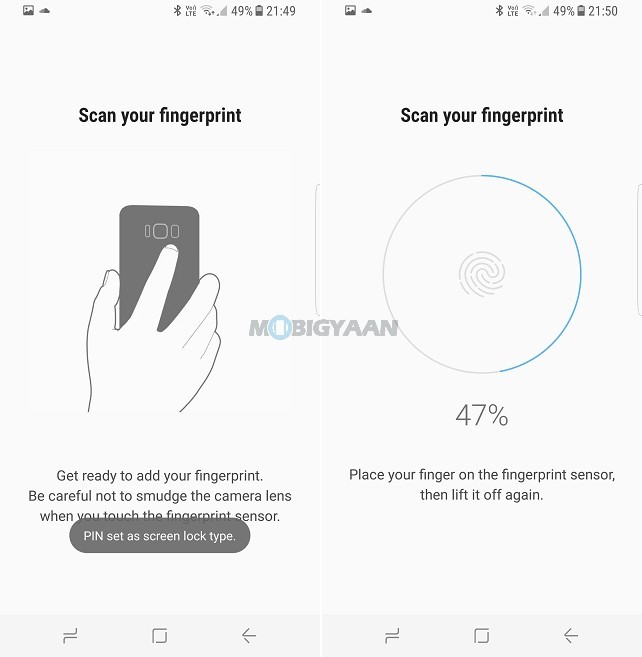
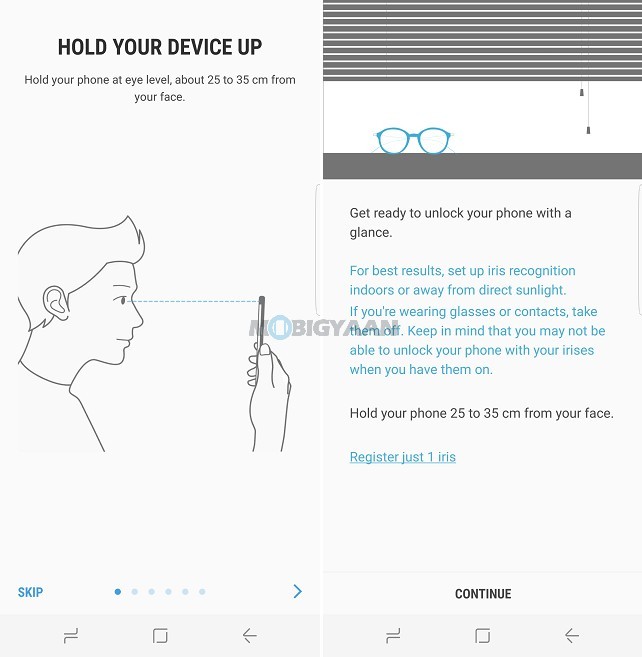
Hardware, Performance & Gaming
When it comes to the specs, Samsung has nailed it. The Galaxy S8 uses its new high-end Exynos 9 series chip in the Galaxy S8. While the US version is equipped with the Qualcomm Snapdragon 835 chip, global variants are using the in-house 10 nm Samsung Exynos 8895 SoC utilizing four powerful Samsung M2 cores (codenamed Mongoose) clocked at 2.35 GHz and another four power saving Cortex-A53 cores clocked at 1.7 GHz. The SoC is backed up with a high-performance 4 GB LPDDR4X RAM (~1794 MHz), a whopping 20-core Mali-G71 MP20 GPU and a fast SSD-like onboard storage of 64 GB (UFS 2.1) expandable up to 256 GB via MicroSD card. Take a look at the CPU-Z info we got on the deivce below.
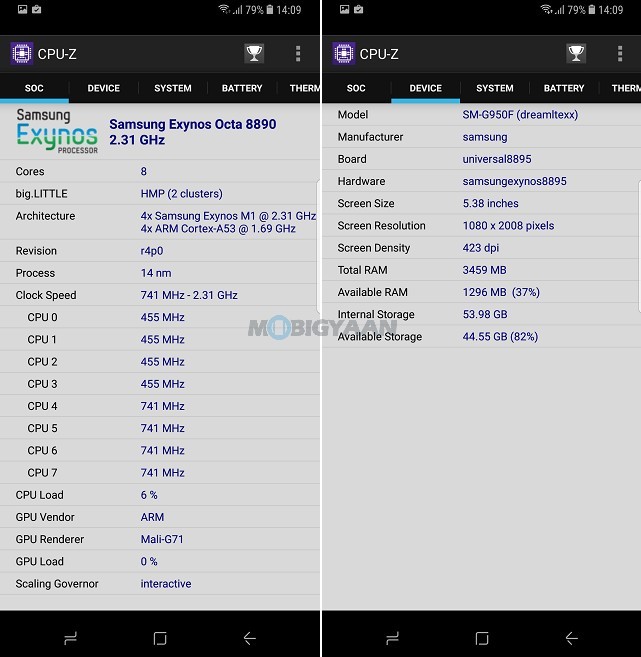
The performance in the benchmarks are excellent showcasing the best in class reaching at the top position. AnTuTu scored highest with 171,410 points. Geekbench 4 scored 2,007 points (single-core CPU), 6,539 points (multi-core CPU) and 8268 points (Mali-G71 MP20 GPU). Quadrant Standard Edition scored well with 43,985 points.
AnTuTu Benchmark
- 171,410 points
Geekbench 4
- 2,007 points (single-core CPU)
- 6,539 points (multi-core CPU)
- 8268 points (GPU)
Quadrant Standard Edition
- 43,985 points
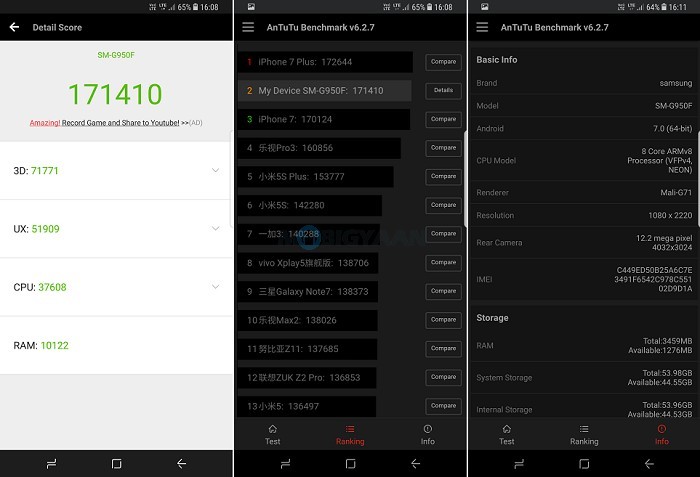
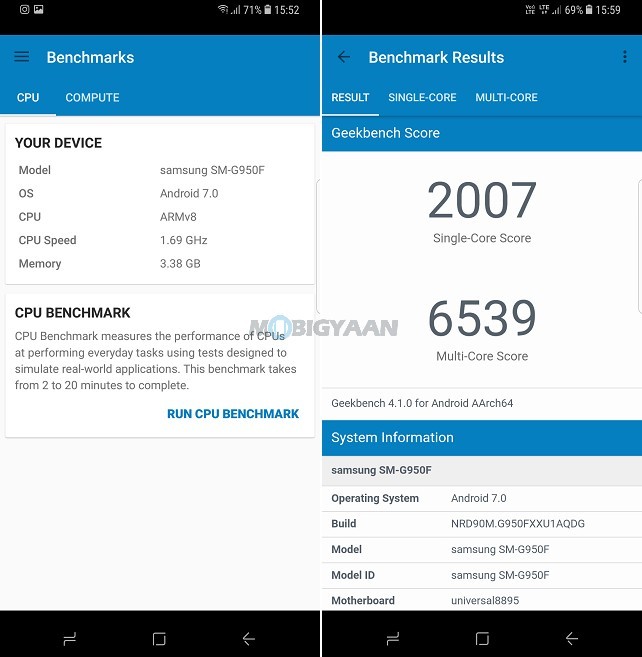
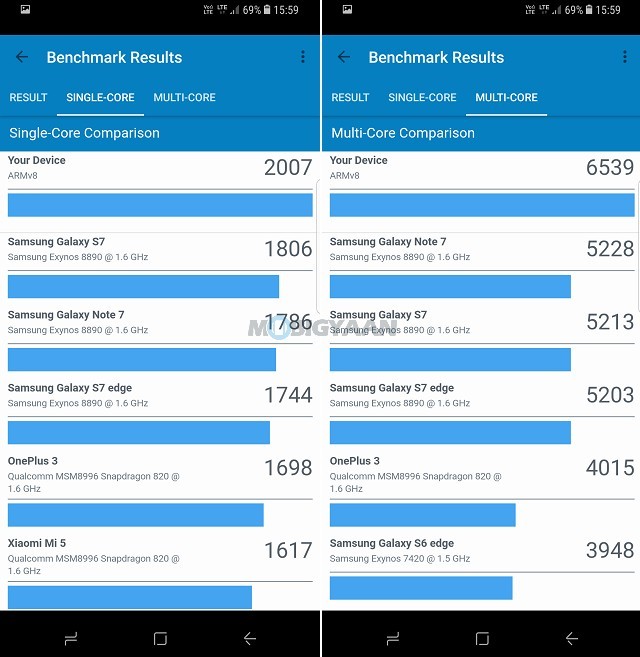
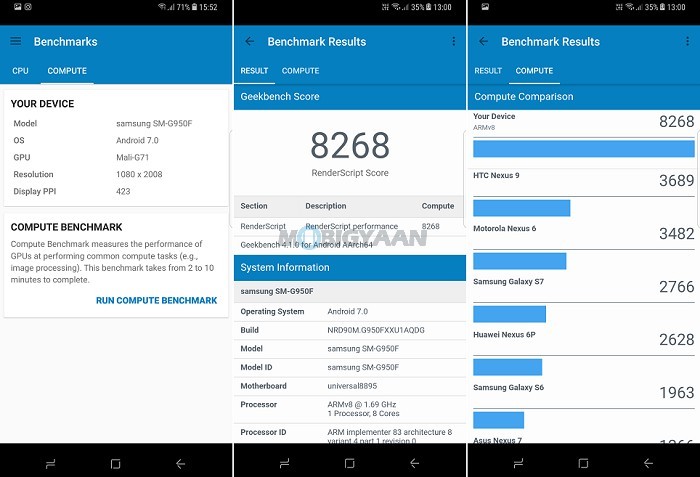
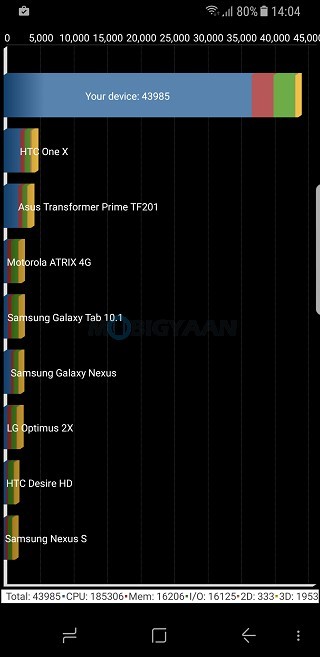
When it comes to gaming, current games do not pose a threat to the Mali-G71 MP20 GPU. All the titles are playable at full settings without any hiccups. On seeing the benchmarks, the 20-core GPU has enough power to handle the demanding games. We tested N.O.V.A Legacy, Asphalt Xtreme, and Mortal Combat X, all are playable at the highest resolution. Do note that the phone has a WQHD+ display, so it requires more power to accelerate the pixels affecting the battery life. You can lower the resolution to the Full HD+ or HD+ in the display settings if you are experiencing battery drain issues.
The game launcher which is present on its predecessor can record games, take screenshots, and disables annoying notifications. While gaming and even watching videos, the positioning of the loudspeaker is still uncertain, it blocks when held in the landscape mode.
Games Tested on Samsung Galaxy S8
- N.O.V.A Legacy
- Asphalt Xtreme
- Mortal Kombat X
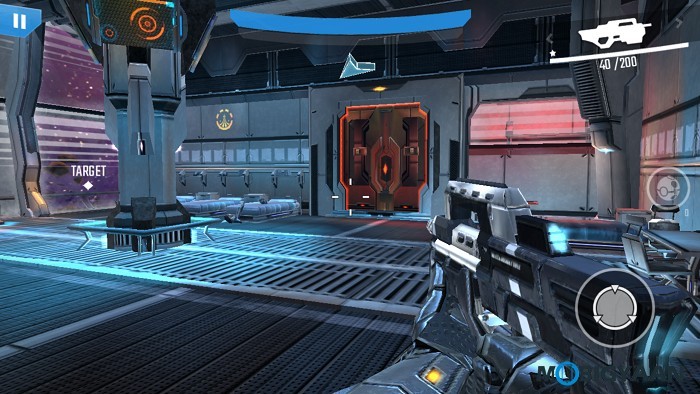
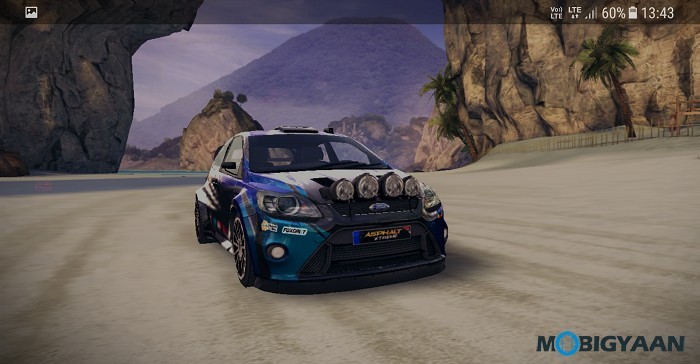

Temperatures are expected to rise above the normal levels since it has got a powerful SoC. Depending on the room temperature the device gets warm on load. I experienced heating while gaming, but that just had to with the hot weather in my city, we hit nearly 45 degrees temperature during the afternoon in the summer. The smartphone is nevertheless only hand-warm.
Storage & Connectivity
The Samsung Galaxy S8 imposes a fast 64 GB UFS 2.1 storage, as there isn’t any other storage variant, I think 64 GB seems enough for photos, however, you do need a larger storage if you are going to record 4K videos on it. It took about 1.30 GB of storage capturing a 4-minute video in 4K resolution. Thankfully, Samsung offers a MicroSD memory expansion up t 256 GB.
About the performance of its UFS storage according to the AndroBench and A1 SD Bench, it is as fast as a desktop SSD. The sequential read speed hits over 700 MBps and write speed over 200 MBps. Despite the good sequential speeds, the random read speed reaches 126.62 MBps and write speed at a mediocre 15.35 MBps. The performance has increased from its predecessor S7 and also leaving behind the OnePlus 3T and Sony Xperia XZs. It could be one of the fastest onboard storages in the flagship category.
A1 SD Bench
- 581.91 MB/s (Read)
- 207.91 MB/s (Write)
AndroBench
- 792.11 MB/s (Sequential Read)
- 206.56 MB/s (Sequential Write)
- 126.62 MB/s (Random Read)
- 15.35 MB/s (Random Write)
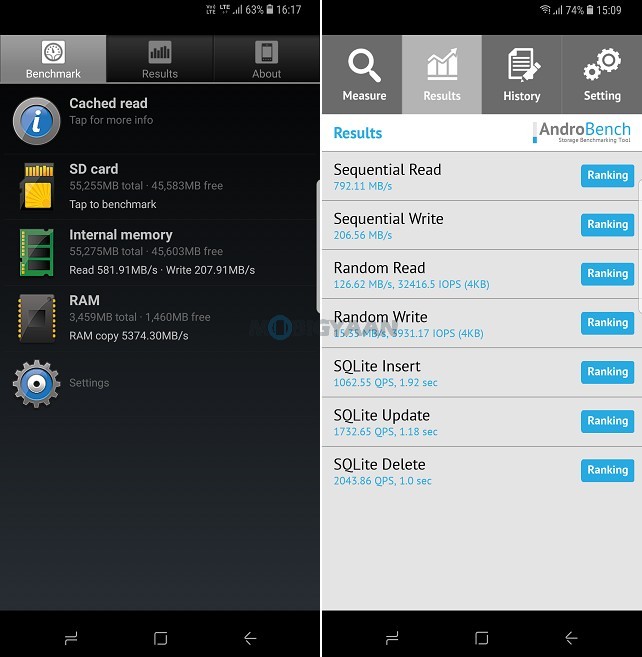
Cameras
Samsung Galaxy S8 is equipped with a 12 MP primary camera utilizing the Sony’s IMX333 Exmor RS camera sensor. The main camera features 4K video recording, optical image stabilization, and slow motion videos at 240 fps. You might be fooled by its megapixels of the camera that sound the same from the Samsung Galaxy S7, but the camera module is merely upgraded.
Samsung Galaxy S8 Camera Specifications
- Camera: 12 MP, f/1.7, dual pixel autofocus
- Sensor: Sony IMX333 Exmor RS
- Optical Image Stabilization (OIS): Yes
- Rear Flash: Single LED
- Features: Geo-tagging, Tap to Focus, HDR, Pro Mode, Panorama, Selective focus, Slow motion, Hyperlapse, Food, Virtual Shot, Burst Shot
- Video Recording: Up to 4K @30 FPS, 1080p @60FPS, Slow Motion 720p @240 FPS
- Front Camera: 8 MP, f/1.7
- Video Recording: Up to QHD 1440p video @30fps
- Front Flash: N/A
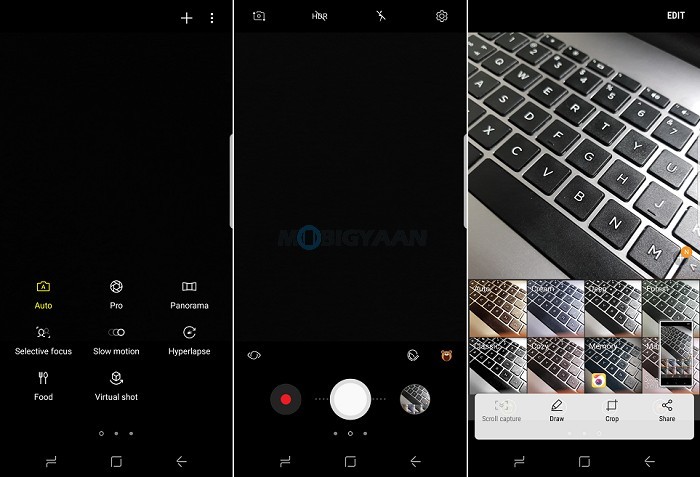
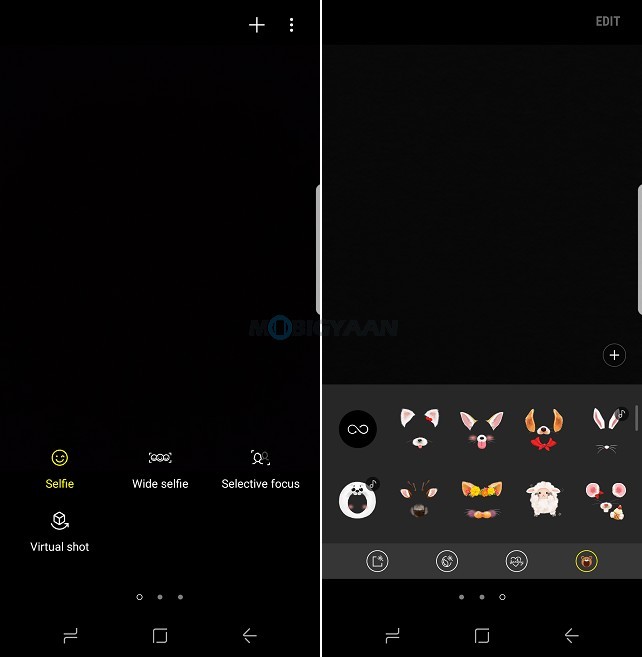
The image results are great leaving a good impression even in environments with less light, there is nothing to complain about the camera in any way. It gives the best shots in the daylight and it does generate the bookeh effect even with a single camera for macro shots.
As compared to the Samsung Galaxy S7, the camera performance is nominally upgraded especially in the software department. The night shots or low light shots are somewhat better than we saw in the Samsung Galaxy S7. I believe Samsung Galaxy S8 captures one of the best low light shots in its class. Thankfully, Samsung continues to use the optical image stabilizer (OIS) but offers single LED flash whereas the Apple iPhone 7 has quad-LED true tone flash.
We were surprised with its front camera performance, the selfie camera is reliable in my opinion. The front camera now offers an AR (Augmented Reality) that takes photos with objects that can interact with you on your movements. Not only it takes photos with AR but videos too.
Summing it up, this is the best camera package you can get. I was expecting a camera that can capture ultra slow motion videos like we saw on the Sony Xperia XZs that takes 960 fps super slow motion videos. But, Samsung decided to keep it reserved for the upcoming devices or at least Samsung is yet to get their hands on with such a high-performance camera for mobile phones. Time can tell.
Take a look at the camera samples taken from the Samsung Galaxy S8 below.
Samsung Galaxy S8 Camera Samples
Battery Runtime
Frankly speaking, the phone can give you a decent battery life, however, it doesn’t last two days on a single charge only, you still have to put it on the charge on the second day. The Samsung Galaxy S8 is powered by a 3,000 battery which seems, at first sight, it’s mediocre. As for a powerhouse like Galaxy S8, a 3,000 mAh capacity isn’t enough especially when it has 5.8-inch Quad HD+ display.
We maxed out the resolution to 2960 x 1440 pixels and stressed the phone’s battery to see how far the phone can survive without a charge. In our tests, the Galaxy S8 gives you 3.5 hours screen on time with 1-day battery life on medium usage. On the other hand, heavy usage doesn’t even last half-a-day giving screen on time of 3 hours. Albeit there was a lousy AnTuTu benchmark app running in the background that took away 16% of the overall battery, don’t expect any good battery runtimes even without it.
Considering the usage, its battery saving traits can help you, but that’s the last thing I would want to do. I usually avoid battery saving modes because it compromises on the phone’s performance disabling some animations and features. You don’t want to get a negative impact on the software experience, do you? Anyways, in our tests, the battery performs a little inferior compared to its last generation. The Samsung Galaxy S7 with 2,600 mAh battery had similar results. There isn’t any significant difference even when upgrading the battery from 2,600 mAh to 3,000 mAh.
After several days of using the phone, the results are average. We tested the phone with apps like playing YouTube, Wi-Fi and 4G data enabled all the time, occasionally using Bluetooth, various other apps that are used as a daily driver. Prolong use will drain the battery quickly primarily while gaming and using the camera.
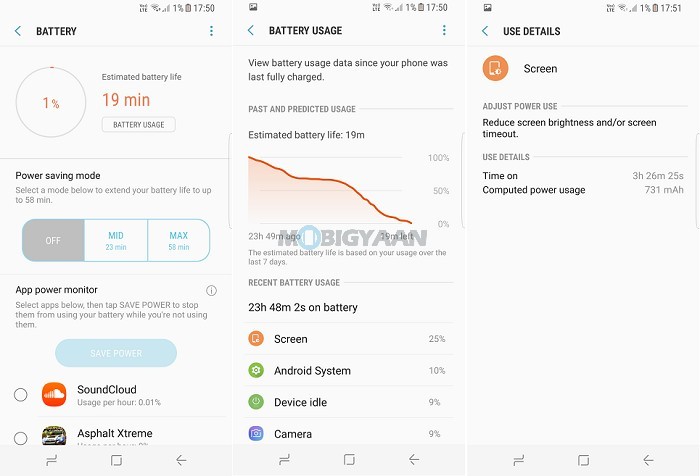
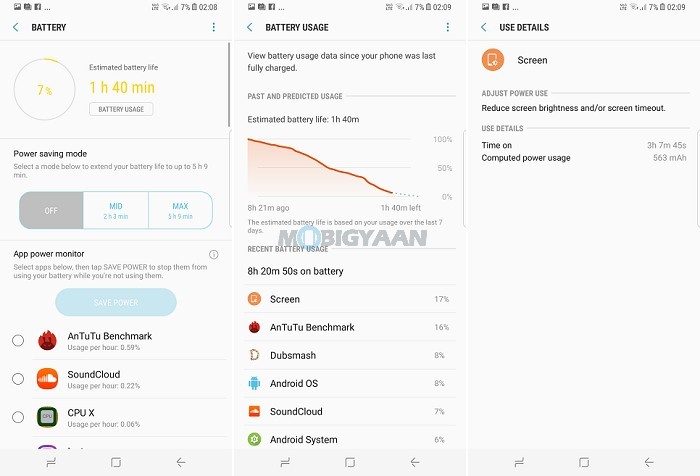
Samsung Galaxy S8 Battery Test Results
| Apps/Games | Battery used | Runtime | Brightness | Wireless |
|---|---|---|---|---|
| 1080p Video | 1% | 20 minutes | Auto | Off (Wi-Fi, GPS, Data) |
| 4K Video | 4% | 20 minutes | Auto | Off (Wi-Fi, GPS, Data) |
| YouTube (1080p) | 4% | 20 minutes | Auto | On (4G Data, Bluetooth) |
| N.O.V.A Legacy | 4% | 20 minutes | Auto | On (Wi-Fi, 4G Data) |
| Asphalt Xtreme | 9% | 20 minutes | Auto | Off (Wi-Fi, GPS, Data) |
| Music (Offline) | 4% | 1 Hour | Screen Off | On (4G Data, Bluetooth) |
| Music Streaming - SoundCloud | 4% | 30 minutes | Screen Off | On (Wi-Fi, 4G Data, Bluetooth) |
| 5% | 20 minutes | Auto | On (Wi-Fi, 4G Data) | |
| 5% | 20 minutes | Auto | On (Wi-Fi, 4G Data) |
Samsung Galaxy S8 charges in about 1 hour 45 minutes which sounds decent. Although it has fast charging enabled, it is still not near to the last year’s flagship OnePlus 3 which charges in half an hour. Somehow the battery life isn’t appealing since there are smartphones in this segment that perform better at the battery.
Pricing, Variants & Availability
The price of the Samsung Galaxy S8 is ₹57,900 for 64 GB model. While there are no other storage variants, it’s 6.2-inch larger screen variant is available at ₹64,900 both available on Flipkart and offline stores.
Verdict
The smartphone itself impresses with its great features which iPhone 7 lacks such as the high-quality infinity display, waterproof design, an added iris scanner, newer Bluetooth version 5.0, Gigabit LTE and a camera that I believe can outperform iPhone 7 Plus’. Anyways, if we aren’t comparing it with the iPhone, it is still a true flagship with the best design in the market and top-notch specifications.
What we like about the phone is its beautiful design, remarkable O-LED display, its compact form factor, performance as well as the camera that you can’t deny. The only major downside is its average battery life. Characterized by its design, it should be straightaway upgraded from the Galaxy S7 without a doubt. While the Galaxy S7 is still a great phone to keep, this phone is highly recommended if you’ve got all those hard-earned cash. The Samsung Galaxy S8 is a clear winner in the flagship category.
Competitors
- Apple iPhone 7 Plus – ₹54,999
- Sony Xperia XZ Premium – ₹59,990
Strength
- Great Looks, Curved Screen and Bezel-less Design
- Excellent Display Quality, High Brightness
- SSD-like storage performance, USB 3.1
- Top-notch CPU and GPU
- IP68 Certified (Dust-proof and Water Resistant)
- Wireless Charging Support
- Iris Scanner Works Good
- Gigabit LTE (1 Gbps Cat. 16 )
- Samsung DeX compatible
Weakness
- Average Battery Life
- Bixby isn’t mature enough
- Fingerprint Scanner Placement is Awkward
- Slippery, May Fall From Wet Hands






